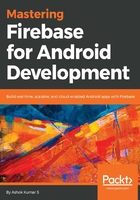
Firebase Realtime Database
The Firebase Realtime Database gives you a chance to fabricate rich, community-oriented applications by enabling secure access to the database specifically from client-side code. Data will continue to be cached locally, and even while disconnected to the internet, real-time events keep on firing, giving the end client a responsive ordeal. At the point when the device recaptures connection, the Realtime Database synchronizes the local data changes with the remote updates that happened while the client was disconnected, consolidating any data contentions consequently.
The Realtime Database gives an adaptable, expression-based rules language, called Firebase Realtime Database Security Rules, to characterize how your data ought to remain organized and when data can be fetched from or written over. At the point when incorporated with Firebase Authentication, engineers can characterize on who approaches what information, and how they can get to it.
The Realtime Database is a very powerful NoSQL database and, in that capacity, it has several advancements and usefulness when compared with a relational database. The Realtime Database API is intended just to permit operations that can continue to be executed rapidly. Firebase allows the developer to assemble an impressive real-time experience that can serve millions of clients without bargaining on responsiveness. Along these lines, it is critical to consider how clients need to get to your information and after that structure it accordingly.
The Firebase Realtime Database supports Android, iOS, web, and more. All data is put away in JSON format and any change in data is reflected promptly by performing a sync operation across every platform. Realtime Database enables us to construct more adaptable real-time applications effortlessly. It helps users to collaborate with one another. At the point when clients are disconnected from the internet, the Realtime Database SDKs employ local cache on the device to store changes. Later when the device comes online, the local data is automatically synchronized to Realtime Database. The Realtime Database incorporates with Firebase Authentication to give basic and instinctive authentication for developers. You can utilize the Firebase security model to permit access-based client identity or with pattern coordinating on your data.
In October, 2017, Google announced Cloud Firestore, the latest real-time, scalable NoSQL database from Firebase and Google Cloud Platform. Since Firestore is still in the beta program, we will learn about Firestore, and the last chapter is dedicated to it.